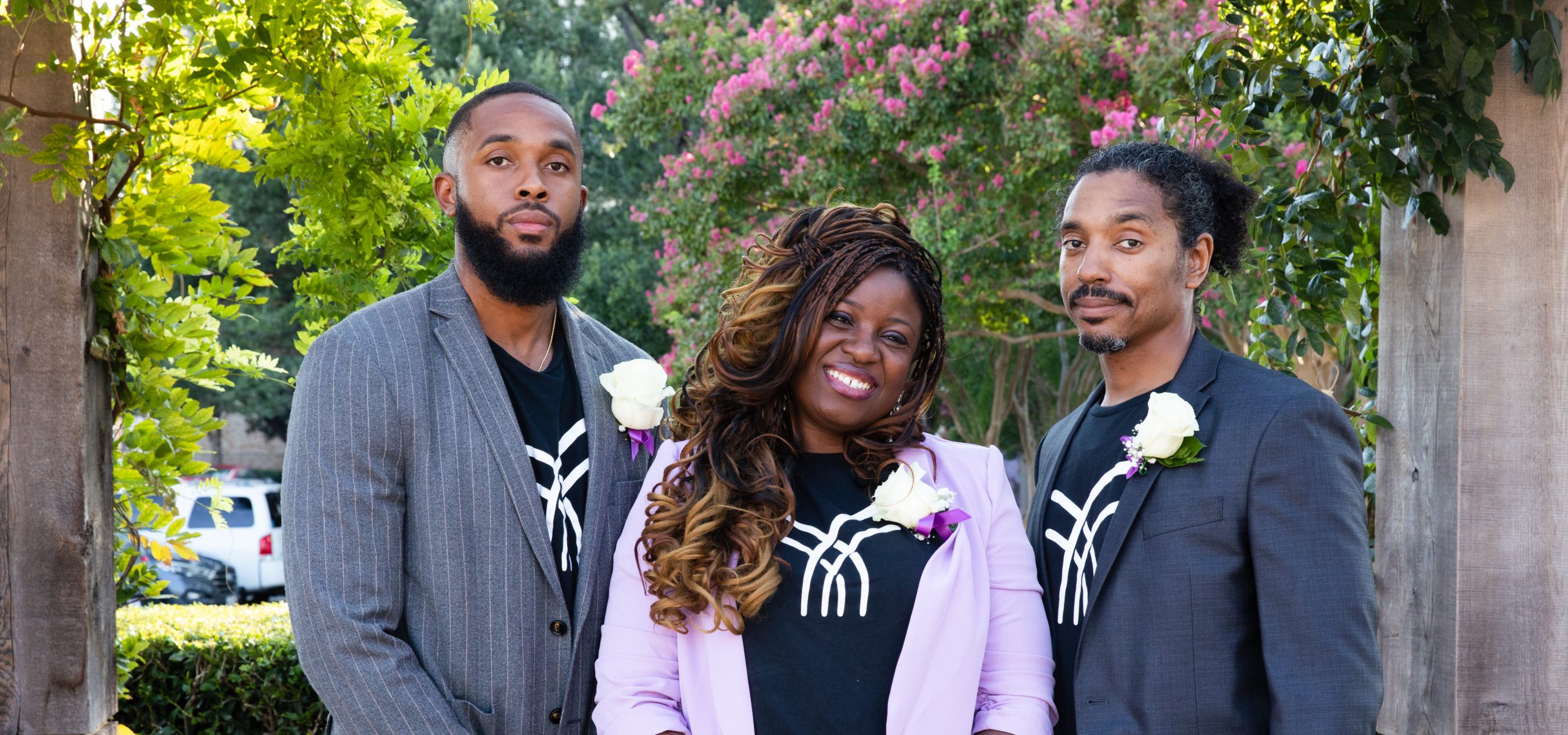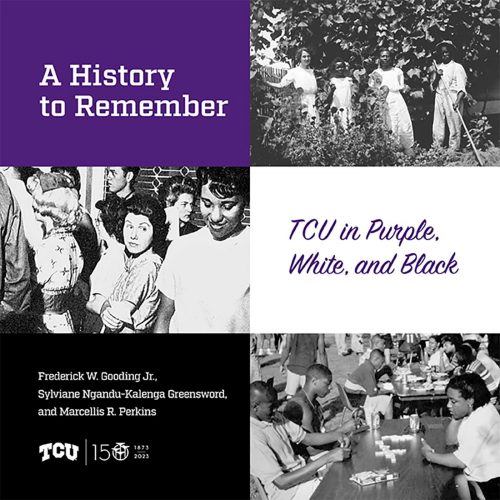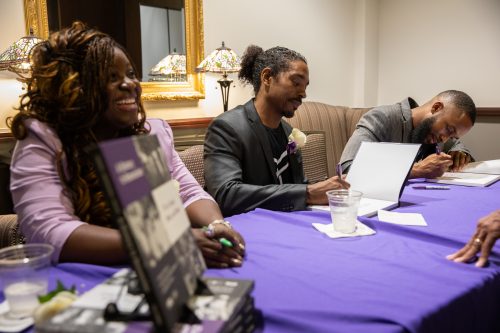History to Remember
A groundbreaking book from TCU Press tells a more complete version of the university’s past.

Marcellis Perkins, left, Sylviane Ngandu-Kalenga Greensword and Frederick Gooding Jr. authored A History to Remember: TCU in Purple, White and Black, which explores the university’s connections to slavery and racism. Photo by Amy Peterson
History to Remember
A groundbreaking book from TCU Press tells a more complete version of the university’s past.
ON A JUNE EVENING IN TCU’S 150th YEAR, a crowd gathered at the Dock Bookshop in east Fort Worth for the official launch of A History to Remember: TCU in Purple, White and Black.
Over the decades, portions of the school’s history had been featured in other university tomes, but each of those accounts was incomplete, said Frederick Gooding Jr., the book’s lead author. Only with this fresh collection of tales, published by TCU Press, would the accounts of the Black experience at TCU be shared in full.
“We tell a more holistic story,” said Gooding, the Dr. Ronald E. Moore Professor in Humanities. “A lot of people think that we start in the ’60s when there’s integration. No… our fingerprints and footprints have been there since day one. Black people have been present. You cannot tell the story of TCU without invoking the African American story.”

Gooding was joined at the bookstore by co-authors Sylviane Ngandu-Kalenga Greensword, an assistant professor of professional practice in TCU’s John V. Roach Honors College, and Marcellis Perkins, a doctoral student in the College of Education.
“Race is very much a taboo,” Greensword said. “People are afraid to discuss those uncomfortable truths. But one thing that people cannot argue with is facts. If we present the facts, people can make their interpretation.”
The venue for the book’s official launch was significant, Gooding said. The Dock Bookshop, about 12 miles east of TCU, is the largest Black-owned bookstore in North Texas.
“We’re here for a reason. We’re from Texas Christian University. Many people call it the Purple Palace in the Sky,” Gooding said. “What we’re trying to do is change that. TCU is not an island unto itself. It is a part of the Fort Worth community. And so we want to make sure that we do our job and build that bridge with the community.”
A History to Remember is a byproduct of TCU’s Race & Reconciliation Initiative, which was chaired by Gooding upon its creation in 2020. Greensword and Perkins joined Gooding as key early members of the research project tasked by the TCU Board of Trustees with exploring the school’s connection to slavery, the Confederacy and racism.
Greensword led a deep research dive into the earliest years of the university, when it was a one-building campus in the village of Thorp Spring, about 40 miles southwest of Fort Worth. She discovered
Charley Thorp, a formerly enslaved man who played an essential role in the college’s early functioning.

Sylviane Ngandu-Kalenga Greensword, Frederick Gooding, Jr. and Marcellis R. Perkins wrote A History to Remember: TCU in Purple, White and Black, which examines the history of race on campus. Photo by Amy Peterson
A History to Remember includes historical photographs — of slave registers, of white students in blackface, of often-ridiculed Black employees of the school — as a means to tell the story of the school’s early years.
The book traces TCU history through integration in 1964, when TCU began to admit Black students.
When asked what most surprised him while researching the book, Perkins pointed to what he had learned about the integration year. Documents recording actions of the Board of Trustees noted that in 1964, TCU simultaneously raised academic requirements and tuition, both potential barriers to students of color.
“Why do you want to increase your academic requirements and tuition in the same document celebrating integration?” Perkins said. “It was their way of strategically getting around this idea of having to be open or be accessible to [Black students].”
The book also chronicles recent years when Black students began to shape the university experience more vocally. The book cites 2016 activism by “Black students and allies” that included a list of demands to increase diversity and cultural sensitivity at the school.
That action “actually resulted in several substantive changes, including the creation of a new administrative outfit entitled the Office of Diversity and Inclusion,” the book reports. Around the same time, TCU also created the Comparative Race & Ethnic Studies program.
“What we wanted to do is elevate this idea of the Black voice that was present,” Gooding said. “We talked about how students played an integral role in many of the university’s changes.
“We should embrace our history and not erase it. These people had the bravery and the temerity to actually lift their voices. And guess what? The university has been forever changed in a positive way.”
But those changes need to be ongoing, Gooding said. A History to Remember makes clear that so much history remains to be written. The book’s final chapter is titled “Ongoing Challenges.”
“What we don’t want is in the year 2073,” Gooding said, “to be accused by those who come after us who say, ‘In 2023, how come you all weren’t asking more questions?’ The question is: What are they going to say about us years from now?”

Your comments are welcome
Comments
Related reading:
Research + Discovery
Deeper Compassion
Joe Hoyle’s capstone project examines the impact of empathy training on scuba volunteers.
Research + Discovery
Paging Through History
A project to catalog a Jewish collection at the TCU library uncovers a mystery in a medieval manuscript.
Research + Discovery
Rattling the Supply Chain
Tyson Browning studies the unintended consequences of punitive economic actions.